Making It Work: 6 AAC Strategies for People with Aphasia
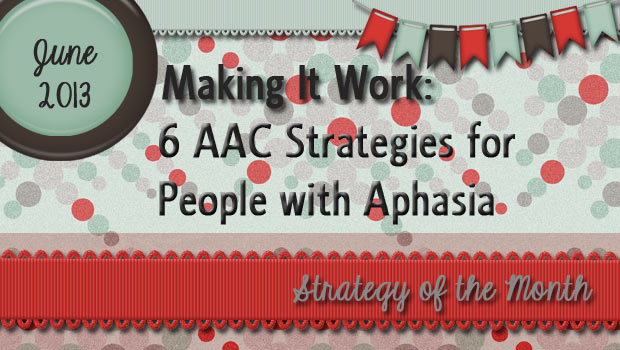
People with aphasia are often most successful when a number of different strategies are combined. In this post, we discuss a number of strategies that we can use in our therapy and teach to communication partners.
Augmented Input
We’ve written so many posts about aided language input that we’re almost embarrassed to bring it up again. Almost. It seems like no matter which age group or clinical population is the subject of our post, that strategy plays a central role. It is the same for people with aphasia with one exception. They benefit from a broader array of input cues, such as gestures, writing, and even pantomime. Augmented input is the term that is used to refer to oral language that is supplemented with pictures, print, gestures, pantomime, and the use of objects in the environment. By using these things as you speak, you enhance the ability of the person with aphasia to understand what you’re saying. Remember, aphasia is a disorder that affects all language modalities and interferes with processing. While comprehension is a strength relative to expressive language, it is usually the case that there are impairments in their ability to comprehend oral language at some level. Adding visual cues, like drawing or pointing to pictures while you speak, supports the comprehension of people with aphasia.
Rating Scales
Another strategy we’ve written about before that has great applicability here is the use of qualitative rating scales. You can download some of the materials for those at that post. Rating scales are a great way to get a quick response from your client. Despite their impairment, most people with aphasia recognize Likert-type scales and can use them with little or no instruction. If not, they are pretty easy to teach by modeling them, using a think aloud strategy, and using graduated prompting in eliciting responses.
The best part of using rating scales is that they are incredibly flexible and can be made on the fly. If you haven’t been using rating scales, give them a try. Here are some suggestions of ways to use them.
Use Hate it/So-so/Love it to give an opinion on things like…
- how a sports team is doing
- a politician’s performance
- a familiar actor or musician
- someone’s outfit or hairstyle
- a recent trip or visit from a friend/family member
- the taste of a meal or beverage
Communication Books
Communication books can play an important role when language retrieval is problematic. Think of a time when you wanted to say a word and had that ‘tip of the tongue’ experience. The word was almost there, but not quite within your grasp. If you had looked down and seen a list of words, you would have quickly recognized the one you wanted to say. The same phenomenon occurs with people who have aphasia and are provided with personal communication books. See some of our general posts on communication books, and the specific case of communication books for people with aphasia.
Tagged Yes/No Questions
It can be very difficult to know how to help clients with severe aphasia regain functional communication skills. For clients who have difficulty answering yes/no questions, one strategy is to use tagged questions. With this approach, you would pose a yes/no question and then add a tag at the end. For example, “Do you have children, yes, or no?” The key to this strategy is how you implement the tag (“yes or no?”). What makes this effective, is to speak slowly and augment your speech with gestures, head nod for yes and head shake for no.
- “Did you drive here, (pause) yes (head nod) or no (head shake)?”
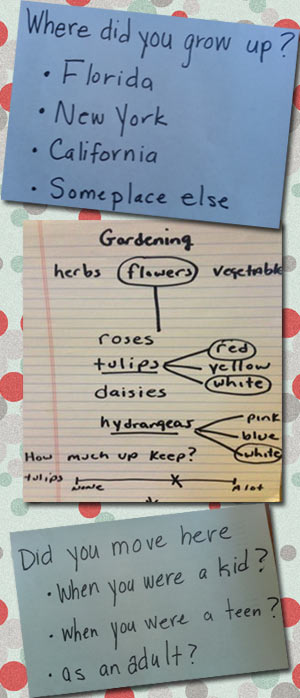
- “Do you have children, (pause) yes (head nod) or no (head shake)?”
- “Can you come again on Tuesday, (pause) yes (head nod) or no (head shake)?”
Written Choice Strategy
We talked previously about using a written choice strategy when conversing with people with aphasia. The written strategy starts when the communication partner poses a question, and writes it down as he/she is saying it. This works best with topics of interest to the person with aphasia, such as hobbies, family, biographical information, or current events. It helps to slow your rate of speech to match the speed of your writing. Then, say and write some possible responses underneath in list format. For example, I may start the conversation by introducing a topic, such as “I know you and Bob take lots of cruises” then follow it up with a question, “Where’s your favorite place to go on a cruise?” Below that, I’d list some choices, writing as I speak.
- “Eastern Caribbean”
- “Western Caribbean”
- “Panama Canal”
- “Europe”
- “Someplace else”
The client with aphasia can answer by pointing at their selection. Most clients with aphasia can do this, even if their reading skills are impaired because you are talking as you write. In some cases, you have to teach them to point to their choice, but generally they have an easy time knowing what to do. Once they have pointed to their answer, you can circle or highlight it. I find this step helpful, because I can go back to it later on to either recap our conversation or retrace our steps to repair a communication breakdown.
The communication partner then makes a relevant comment (e.g. “I’ve heard that the Panama Canal cruises are amazing”) or offers his/her own opinion (e.g., “I love the Eastern Caribbean”). The process is then repeated to expand the conversation until the topic is exhausted.
Supplementation Strategies
It is incredibly helpful to know the topic of the conversation and/or the first letter of the word the client is trying to say when you client has a significant communication impairment.You can download topic boards and alphabet cards in one of our earlier posts on this topic.
–
–
–
–
–
–
Pulling It All Together
For people with aphasia, regaining functional communication skills can be a lengthy process. We can facilitate their success by using these and other strategies in our therapy, and by spending a good deal of time teaching communication partners to use them. Unfortunately, it seems like relatively few SLPs use these empirically-supported strategies with people with aphasia. Are you among them? We’d love to hear from you.
Filed under: Strategy of the Month
Tagged With: aided language input, aphasia, augmented input, communication book, rating scale, supplementation, tagged questions, written choice strategy
This post was written by Carole Zangari
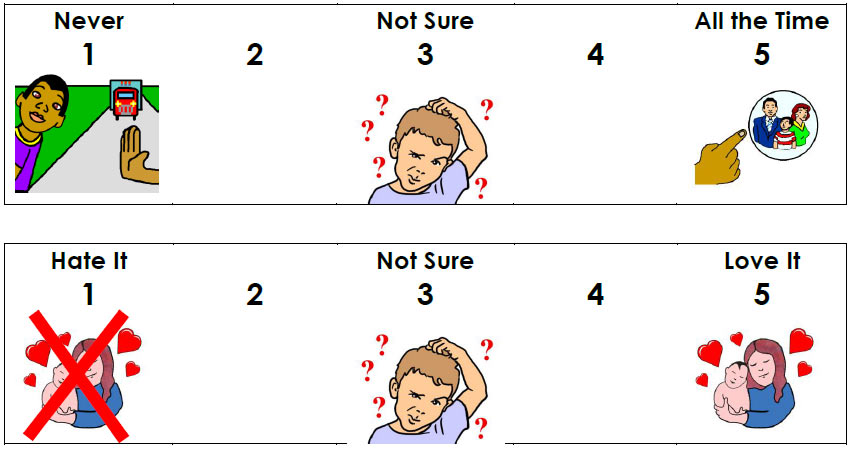
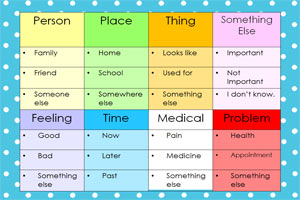
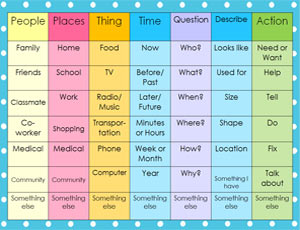

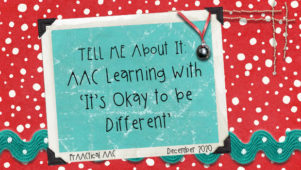
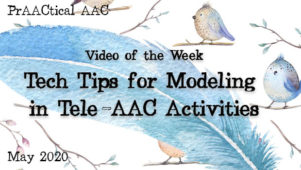
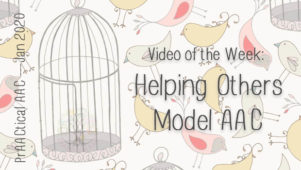
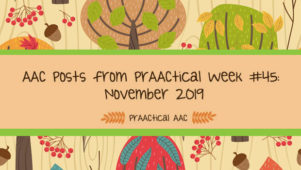
4 Comments
The topic boards and written choice strategies seem perfect for one of my clients. Thank you for sharing!
love the topic boards!
Topic boards are extremely helpful. Downloading now for myself. Maybe convos can be a lot easier w those.
THANK YOU!
You’re very welcome, Kris!